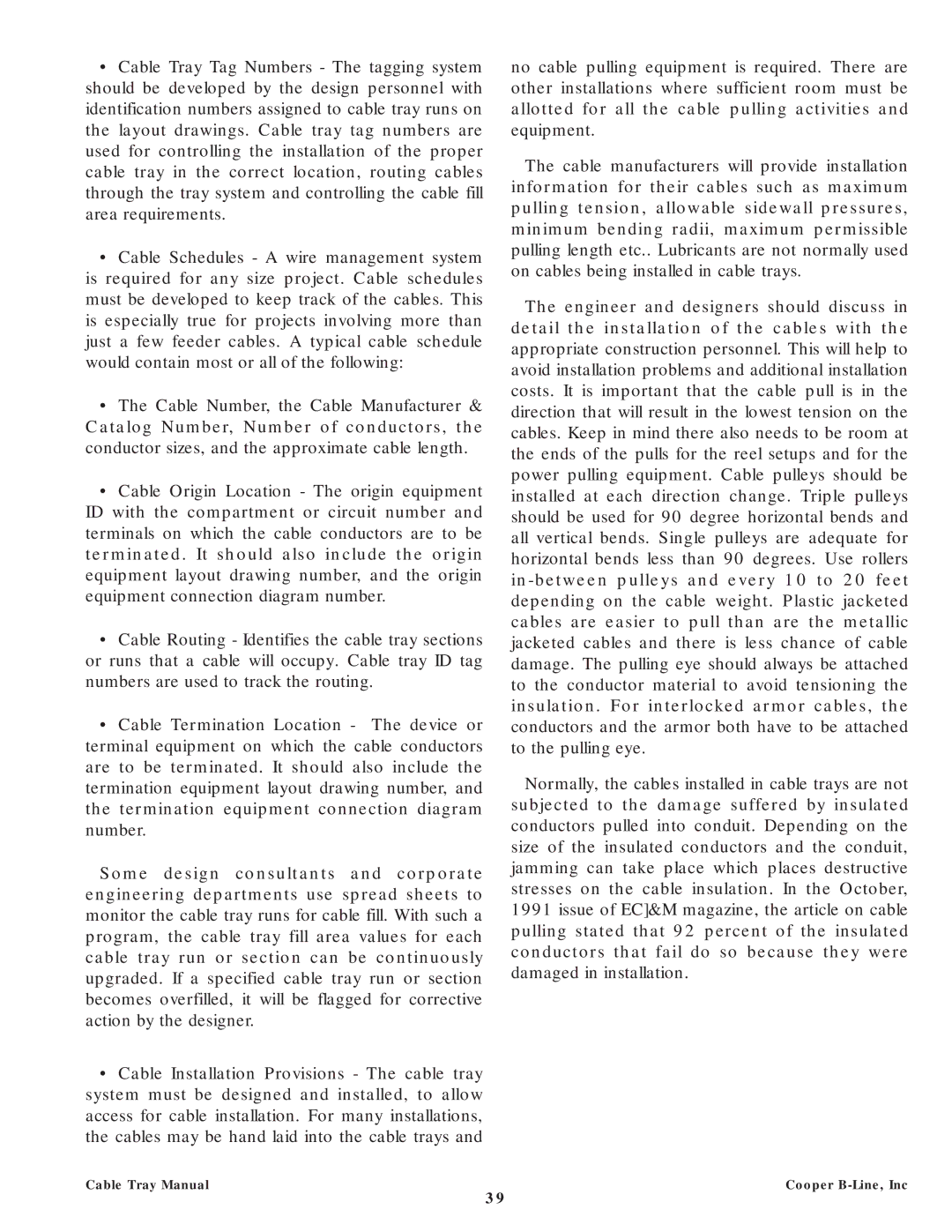•Cable Tray Tag Numbers - The tagging system should be developed by the design personnel with identification numbers assigned to cable tray runs on the layout drawings. Cable tray tag numbers are used for controlling the installation of the proper cable tray in the correct location, routing cables through the tray system and controlling the cable fill area requirements.
•Cable Schedules - A wire management system is required for any size project. Cable schedules must be developed to keep track of the cables. This is especially true for projects involving more than just a few feeder cables. A typical cable schedule would contain most or all of the following:
•The Cable Number, the Cable Manufacturer & Catalog Number, Number of conductors, the conductor sizes, and the approximate cable length.
•Cable Origin Location - The origin equipment ID with the compartment or circuit number and terminals on which the cable conductors are to be terminated. It should also include the origin equipment layout drawing number, and the origin equipment connection diagram number.
•Cable Routing - Identifies the cable tray sections or runs that a cable will occupy. Cable tray ID tag numbers are used to track the routing.
•Cable Termination Location - The device or terminal equipment on which the cable conductors are to be terminated. It should also include the termination equipment layout drawing number, and the termination equipment connection diagram number.
Some design consultants and corporate engineering departments use spread sheets to monitor the cable tray runs for cable fill. With such a program, the cable tray fill area values for each cable tray run or section can be continuously upgraded. If a specified cable tray run or section becomes overfilled, it will be flagged for corrective action by the designer.
•Cable Installation Provisions - The cable tray system must be designed and installed, to allow access for cable installation. For many installations, the cables may be hand laid into the cable trays and
no cable pulling equipment is required. There are other installations where sufficient room must be allotted for all the cable pulling activities and equipment.
The cable manufacturers will provide installation information for their cables such as maximum pulling tension, allowable sidewall pressures, minimum bending radii, maximum permissible pulling length etc.. Lubricants are not normally used on cables being installed in cable trays.
The engineer and designers should discuss in detail the installation of the cables with the appropriate construction personnel. This will help to avoid installation problems and additional installation costs. It is important that the cable pull is in the direction that will result in the lowest tension on the cables. Keep in mind there also needs to be room at the ends of the pulls for the reel setups and for the power pulling equipment. Cable pulleys should be installed at each direction change. Triple pulleys should be used for 90 degree horizontal bends and all vertical bends. Single pulleys are adequate for horizontal bends less than 90 degrees. Use rollers
Normally, the cables installed in cable trays are not subjected to the damage suffered by insulated conductors pulled into conduit. Depending on the size of the insulated conductors and the conduit, jamming can take place which places destructive stresses on the cable insulation. In the October, 1991 issue of EC]&M magazine, the article on cable pulling stated that 92 percent of the insulated conductors that fail do so because they were damaged in installation.
Cable Tray Manual | Cooper |
39
